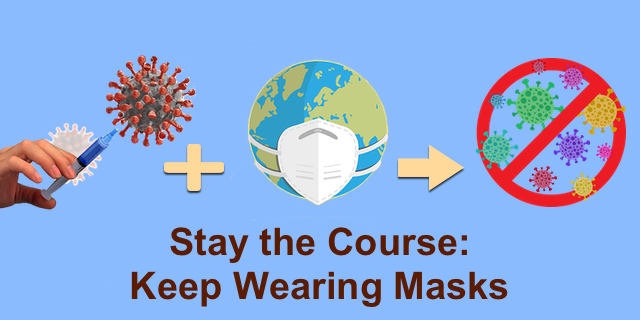On January 19, in the online news website MedPage Today, two prominent scientists debated if people should be able to go without masks 14 days after they have received their second dose of COVID-19 vaccine. The January 24, Sunday New York Times just published, Why Vaccines Alone Won’t Stop the Pandemic .
The January 19 debate was between Vinay Prasad, MD, MPH, hematologist-oncologist and associate professor of medicine at the University of California San Francisco and David Aronoff, MD, director of the Infectious Diseases Division in the Department of Medicine at Vanderbilt University. Dr. Prasad, with a number of caveats, supports the view that reducing the use of masks and social distancing is a viable option based on his interpretation of statistics around COVID-19 vaccine effectiveness. He also feels that being able to stop using masks and social distancing could be used as a message to persuade more people to vaccinate. Dr. Aronoff disagrees. His read of the data on the vaccine led to his writing, “Do I think the risk to an individual will be zero following successful immunization? No.”
Dr. Aronoff also points to the fact that it would be difficult to know if people without masks have actually gotten vaccinated. They could be an anti-masker.
Commenting on the debate, Tal Givoly, CEO of Medivizor made excellent points:
1. There are millions of people that are immunocompromised or immunosuppressed. Their immune response is likely diminished even in light of vaccination. They are unlikely to be protected merely by a vaccine. This population will need to continue to wear masks / take precautions for a while.
2. The mere fact some people don’t wear masks makes it exceedingly more difficult to expect others to do so in any situation. One way to think about this is ‘herd solidarity’. If we all just wear masks (and exercise other precautions), there will be less people sick, dead, and in financial jeopardy from the many ways one might get into such financial jeopardy. So by avoiding masks, you may personally not suffer higher risk once vaccinated, and you may personally not spread the disease, BUT you might create an environment where such spread is unavoidable because people “follow your lead”…
Mask Wearing Models
The NY Times article is about different models that have been created to show what would happen if mask and social distancing restrictions are lifted too soon. The models by Jeffrey Shaman, an epidemiologist at Columbia and his team, show that if restrictions are lifted in February, before herd immunity has been achieved, another 29 million additional COVID-19 infections are predicted. With each new infection the opportunity for a new strain of the virus to evolve increases. This can result in “viral escape,” the formation of a new strain of virus that would not be covered by the COVID-19 vaccine. As the new strains from Britain and South Africa show, this virus is evolving rapidly.
The Bottom Line
So, people need to get vaccinated and continue to wear their masks. As Givoly puts it, “masks are a small price to pay to slow down this pandemic. Think of it as a visible and protective measure of collective solidarity. We’ll wear masks to help our fellow humans.”
Feature image combines these 3 images: Image by Gerd Altmann from Pixabay
Image by cromaconceptovisual from Pixabay
Image by Shafin Al Asad Protic from Pixabay






